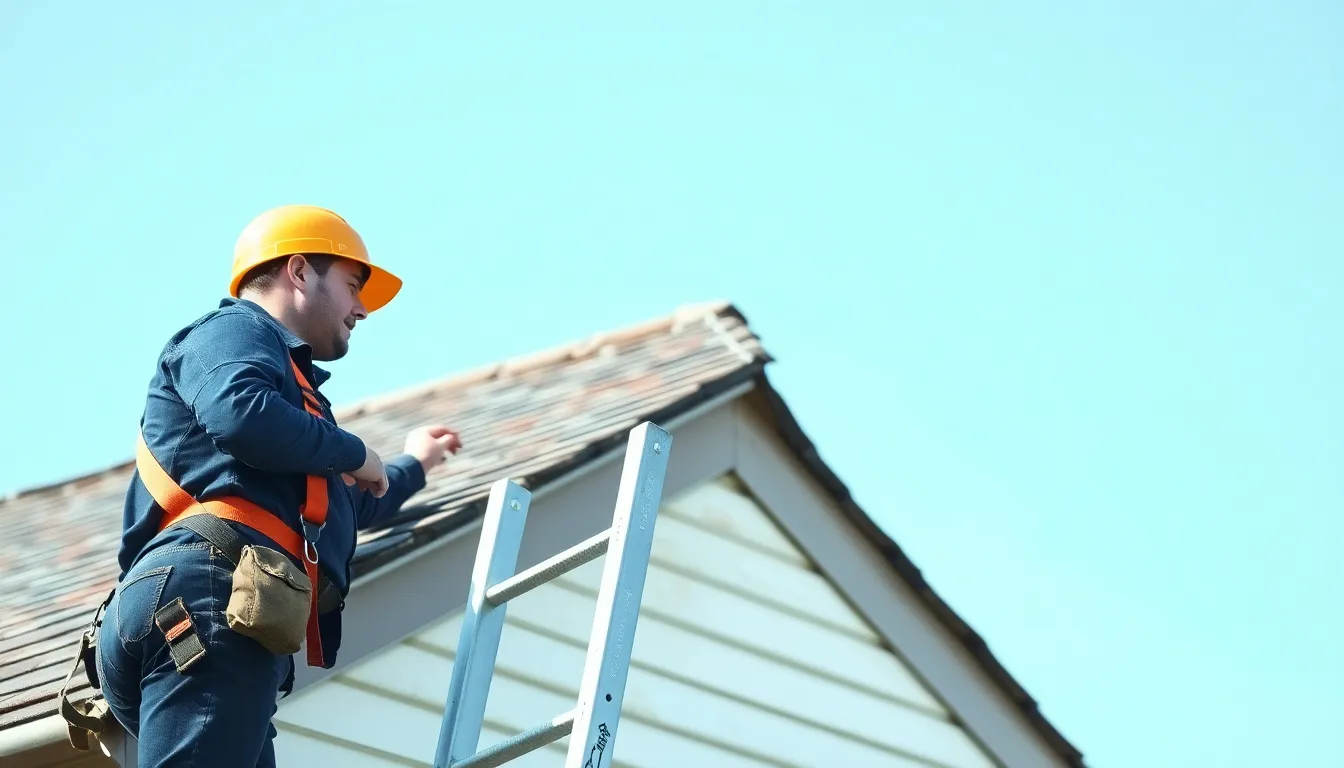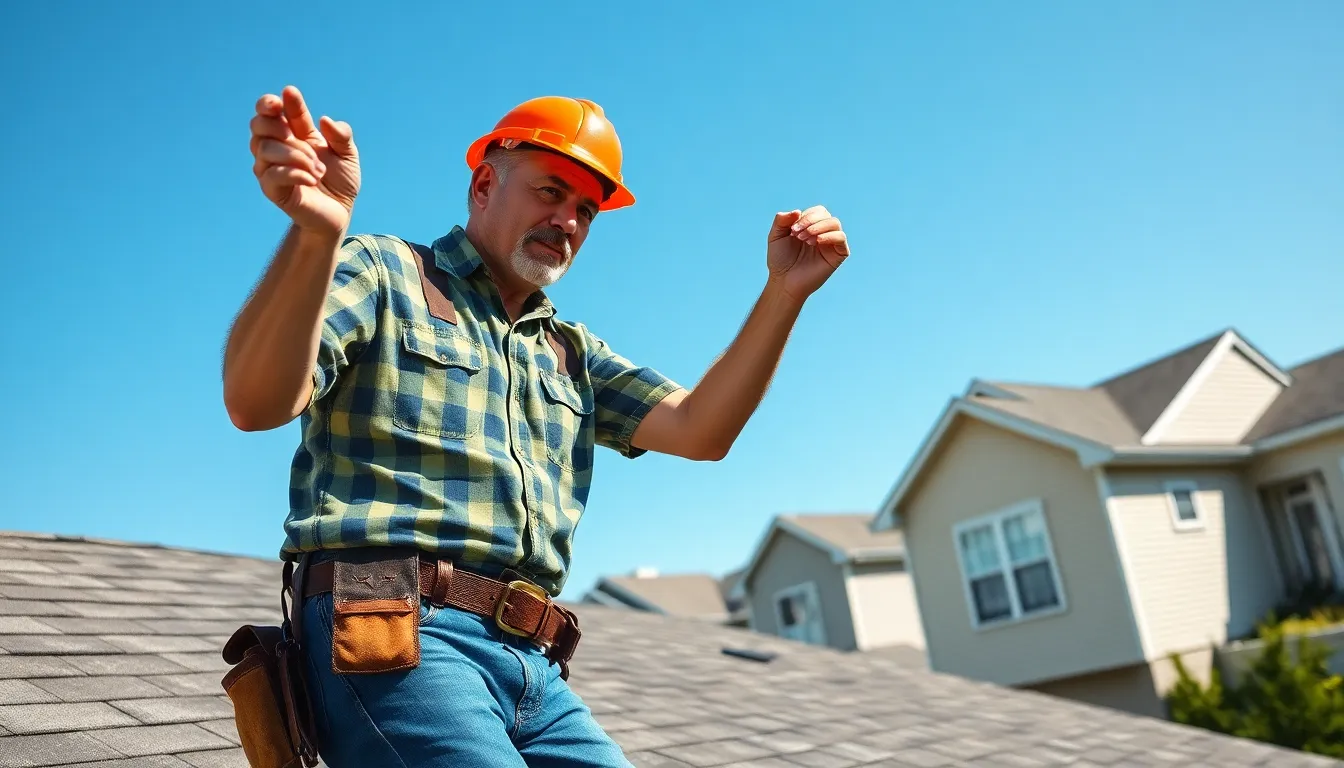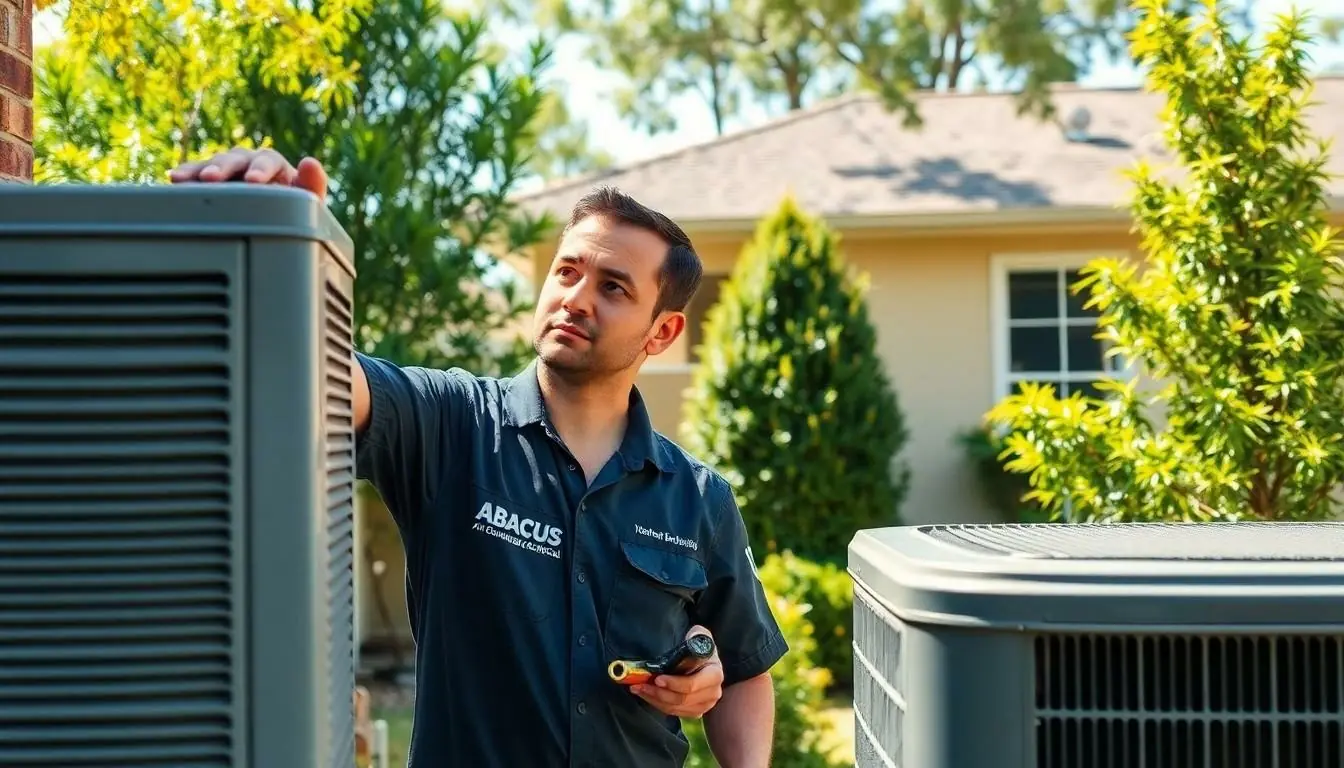Table of Contents
ToggleWhen it comes to home maintenance, roof repair often gets pushed to the bottom of the to-do list. After all, who wants to think about climbing ladders and dealing with shingles? But ignoring that pesky leak is like ignoring a bad haircut—it just gets worse over time. A little proactive care can save homeowners from a costly disaster down the road.
Importance of Roof Repair
Addressing roof repair immediately prevents more severe damage. A well-maintained roof protects the entire home from external elements. Ignoring small leaks or cracks can lead to bigger issues like mold growth or structural damage. Homeowners often overlook these problems, mistakenly believing they can address them later. Roof repair enhances a home’s value by ensuring its structural integrity.
Neglecting roof issues results in higher repair costs over time. Repairing a roof promptly can save 30% to 50% on costly replacements. Identifying issues early often allows for straightforward fixes rather than extensive renovations. Additionally, a damaged roof can increase energy bills. Poor insulation from a compromised roof leads to significant heat loss during winter months.
Homeowners should schedule regular inspections to catch problems early. Investing in maintenance leads to long-term savings and a stable home environment. A proactive approach fosters peace of mind, knowing the roof stands ready against storms and inclement weather. Roof repair also contributes to increased safety, reducing the risk of potential injuries from falling debris.
Prioritizing roof repair is crucial for homeowners seeking to maintain property value, ensure safety, and minimize costs. Addressing these issues now can lead to better outcomes in the long run.
Common Roof Problems

Homeowners frequently encounter several common roof problems that demand attention. Understanding these issues leads to timely repairs, safeguarding homes and finances.
Leaks and Water Damage
Leaks often arise from age, severe weather, or faulty installation. Water damage can quickly escalate, leading to mold growth and compromised structural integrity. Inspecting the roof for visible signs of leaks, such as stains on ceilings or walls, proves essential. Addressing leaks promptly can save homeowners 30% to 50% on potential replacement costs. Regular maintenance prevents small issues from evolving into significant damage.
Missing or Damaged Shingles
Missing or damaged shingles expose roofs to harsher elements, increasing vulnerability. Shingle loss commonly happens during high winds or storms, while damage can stem from deterioration over time. Replacing damaged shingles helps maintain roof effectiveness and appearance. Homeowners should check roofs after storms and replace missing or cracked shingles as soon as possible. Neglecting this issue can lead to costly repairs and reduced energy efficiency in homes.
Structural Issues
Structural issues significantly impact a roof’s longevity and safety. Problems can arise from water damage, storms, or poor installation. Signs of structural issues include sagging roofs, cracks in walls, and uneven roof surfaces. Structural evaluations by professionals identify hidden problems early, allowing for timely repairs. Proactive attention to structural integrity prevents severe damage and costly replacements, contributing to overall home safety.
Roof Repair Techniques
Effective roof repair techniques address issues swiftly, protecting homes from potential damage. Homeowners should consider various methods based on the specific problem at hand.
Patch Repair
Patch repair effectively addresses small leaks and minor damage. This technique involves placing a durable material over the affected area to seal leaks and prevent water intrusion. Homeowners often find this method cost-effective, requiring fewer materials than larger-scale repairs. When applied correctly, patches can restore the integrity of the roof quickly, ensuring that underlying problems do not escalate. Regular inspections can help identify areas needing patching before they worsen.
Complete Shingle Replacement
Complete shingle replacement is necessary when shingles become severely damaged or missing. This process restores the roof’s overall functionality and appearance. Homeowners may choose this option when patches become too frequent, indicating more systemic issues. Selecting high-quality shingles can enhance durability, mitigate leaks, and improve energy efficiency. Professionals recommend timely replacements to prevent further structural damage, reducing long-term repair costs.
Flashing Repair
Flashing repair addresses the crucial areas where different roofing components meet, such as around chimneys and vents. Damaged flashing can lead to significant leaks, compromising the entire roofing system. When performing flashing repairs, it’s essential to use waterproof materials for lasting protection. Homeowners benefit from regular checks of flashing to ensure its condition remains optimal. Maintaining proper flashing plays a critical role in extending the life of the roof and preventing costly damages.
Choosing a Roofing Contractor
Selecting the right roofing contractor is crucial for effective roof repair. Homeowners must focus on qualifications and expertise to ensure quality services.
Credentials to Look For
Look for contractors with valid licenses and appropriate insurance. Consider those with certifications from reputable roofing manufacturers, which indicate adherence to quality standards. Check online reviews and references to gauge their reputation and reliability. Industry experience can play a significant role; seek contractors with extensive backgrounds in roof repair. Evaluate their affiliations with professional organizations, as membership suggests a commitment to best practices and continuous learning.
Questions to Ask
Ask about their experience with specific roofing systems and materials. Inquire about the process they use for inspections and repairs to understand their approach. Discuss timelines and expected completion dates to align on scheduling. Confirm warranty details to ensure protection against defects in material and workmanship. Request a detailed estimate that outlines labor and materials, helping clarify costs upfront.
Cost Factors in Roof Repair
Roof repair costs vary based on several factors. Understanding these factors helps homeowners budget effectively and prioritize necessary repairs.
Material Costs
Material costs play a significant role in roof repair pricing. Common materials include asphalt shingles, metal sheets, and tiles. Asphalt shingles typically range from $90 to $100 per square, while metal roofing may cost between $300 and $700 per square. Tile roofing can increase costs even further, ranging from $600 to $1,000 per square. Choosing high-quality materials often results in higher upfront costs but leads to long-term savings through increased durability and reduced maintenance needs. Additionally, the availability of materials and local market conditions can influence prices, making it essential for homeowners to research and compare options before committing.
Labor Costs
Labor costs are another essential consideration in roof repair. Generally, labor rates vary depending on experience, region, and the complexity of the job. The average hourly rate for roofing contractors ranges from $45 to $75 an hour. Hiring professionals for specialized tasks, such as structural repairs or complex installations, can further increase labor expenses. Contractors may also offer quotes based on the total project cost rather than hourly charges, which can provide better clarity on overall expenses. Prioritizing skilled labor helps ensure quality repairs and ultimately extends a roof’s lifespan, making it a crucial investment for homeowners.
Roof repair is an essential aspect of home maintenance that shouldn’t be overlooked. By addressing issues promptly homeowners can avoid escalating damage and save significantly on future costs. Regular inspections and proactive maintenance not only enhance the roof’s lifespan but also contribute to a safe and comfortable living environment. Choosing the right contractor ensures quality repairs that protect the homeowner’s investment. Ultimately a well-maintained roof is key to preserving property value and ensuring peace of mind. Investing in timely repairs is a wise decision that pays off in the long run.







